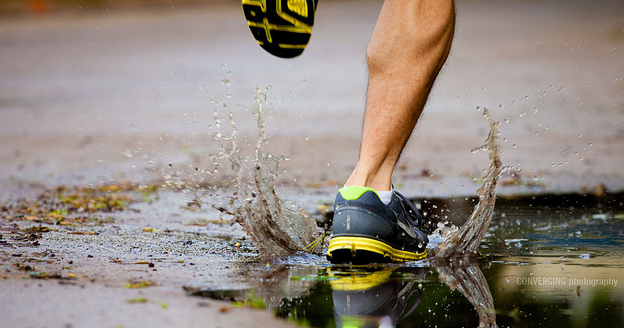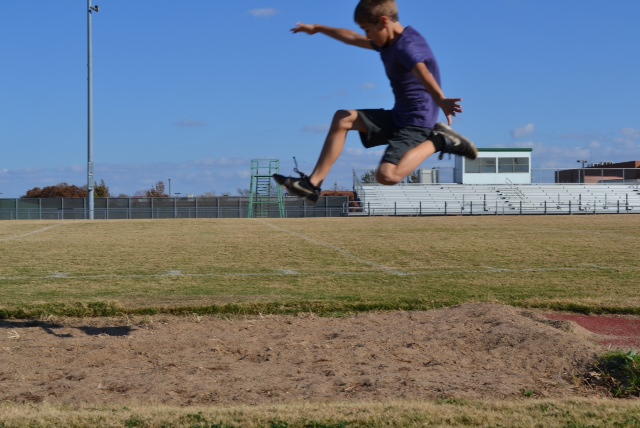Connect With Us
Running and Track Injuries
 Jogging gained enormous popularity in the 1970s as a great form of cardiovascular fitness. Since then running has become one of the most popular form of physical fitness in America. Whether you run on an indoor track or outdoors, you can enjoy this activity year-round and fit it comfortably into your daily routine.
Jogging gained enormous popularity in the 1970s as a great form of cardiovascular fitness. Since then running has become one of the most popular form of physical fitness in America. Whether you run on an indoor track or outdoors, you can enjoy this activity year-round and fit it comfortably into your daily routine.
During jogging or running, the 26 bones, 33 joints, 112 ligaments, and a network of tendons, nerves, and blood vessels that make up the foot all work together. That's why you need to condition your body, build up to a routine, and stretch your muscles, tendons, and ligaments before and after each run. Debilitating muscle strain or more serious injury can result when runners or joggers don't build up their routines and allow their bodies to strengthen over time.
The most common foot problems associated with jogging or running are blisters, corns, calluses, Athlete's Foot, shin splints, Achilles tendonitis, and plantar fasciitis. You can prevent many simple foot problems by using proper foot hygiene. Keep your feet powdered and dry. Wear clean socks every time you run. Make sure your shoes fit properly. Most importantly, let your body be your guide so that you don't overstrain your legs, ankles, and feet. If you develop recurring and/or increasing aches and pains from jogging or running, please contact our office and we'll help you pinpoint the problem and prevent more serious injury or long-term damage to your feet.


Whether an athlete is a recreational, competitive, or elite runner, foot and ankle health is essential for optimal performance.
Runners are susceptible to overuse injuries including:
- heel pain (plantar fasciitis),
- Achilles tendonitis,
- sesamoiditis,
- neuromas,
- MPJ capsulitis,
- stress fractures,
- posterior tibial tendonitis (or PTTD),
- and calcaneal apophysitis in children/adolescents.
Jogging/Running Shoes
Because of the force placed on your legs, ankles, and feet, jogging/running shoes need to provide cushioning for shock absorption. Like walking shoes, you need to select a pair designed for the shape of your foot and your natural foot structure or inclination. There are three basic foot types. Make an appointment today with a Foot and Ankle Specialist to find out your foot type and what running shoes are best for you!
When you run, your foot rolls quickly from the heel to the toe, with your foot bending at the ball on each step. That's why it is important for running shoes to have enough flexibility in just the right places. However, to help with shock absorption, you need a little more rigidity to support the middle of the foot. Make sure the heel is low, but slightly wider than a walking shoe to help absorb the initial shock when your heel strikes the ground.
Here are some other important tips for buying a good pair of running shoes:
- Shop at the end of the day when your feet are slightly swollen to get a good fit.
- Try on shoes with the socks you will wear when walking. If you use an orthotic, bring that to the store when you try on shoes as well.
- Have your feet measured standing up and fit your shoes to the larger of your two feet.
- Be sure there is enough room in the toe box for your toes to wiggle and about a half inch between your toes and the end of the shoe.
- Take time when shopping to try on different brands and walk around the store in each pair. Be sure to walk on a hard surface, not just on carpeting. Let your foot be the guide to the fit, not the shoe size or style.
- Look for lightweight, breathable materials for greater comfort.
- Run your hand all over and inside the shoes to feel for any seams or catches that might irritate your foot.
- Choose shoes that lace for better foot stability and control.
- Make sure your heel fits snugly and does not tend toward slipping out of the shoe.
- Consider buying two pairs and rotating your wear to give each pair time to breath between runs and extend the life of each pair.
- Replace running or jogging shoes twice a year or about every 400 miles.
Evaluation by a foot and ankle surgeon will help the athlete determine the underlying cause of pain and the best course of treatment. Custom orthotic devices are often used for treatment of these conditions.
